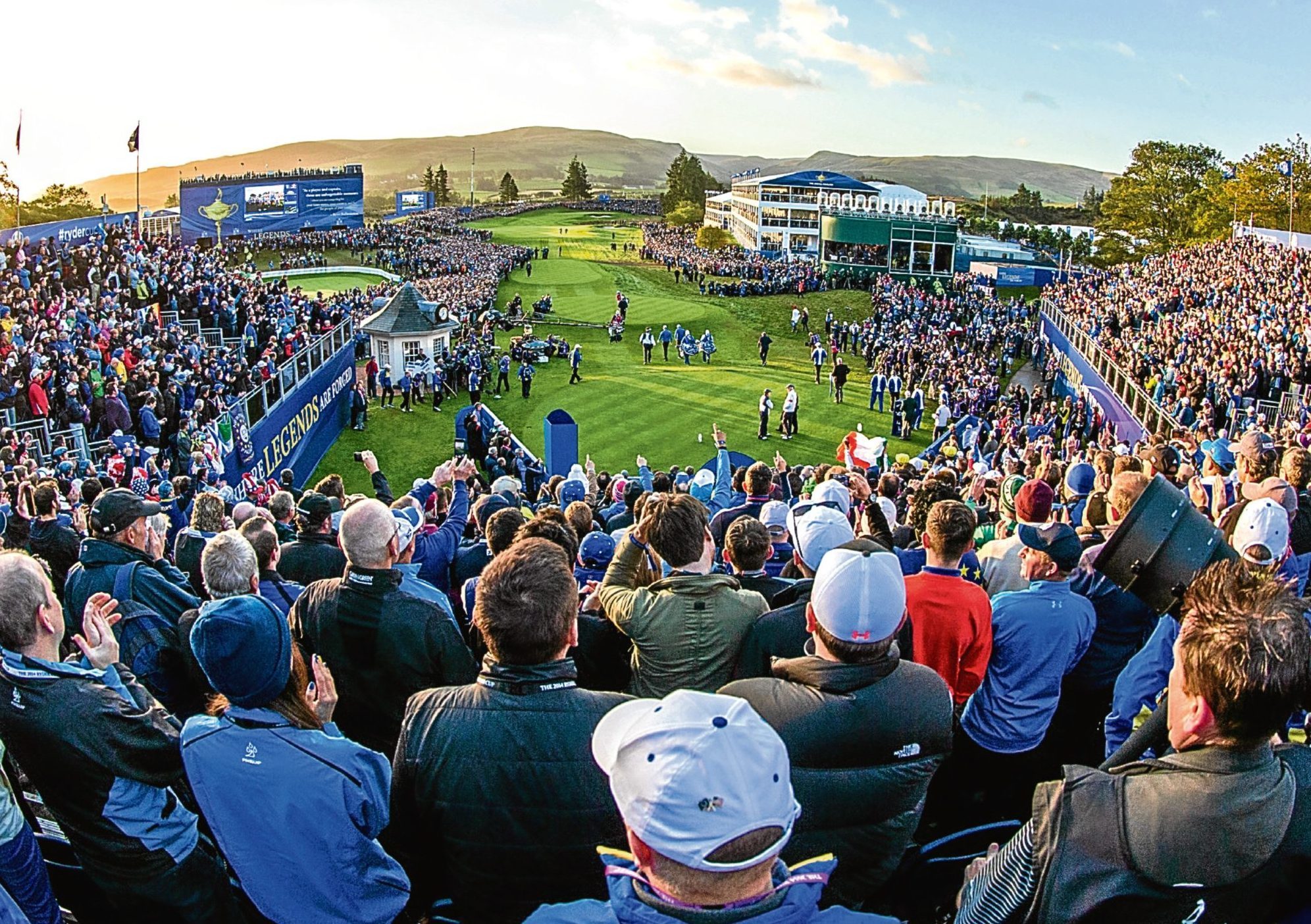It goes without saying that this week’s 145th Open Championship at Royal Troon is a crucial week for Scottish golf. Every Open staged on this soil, it’s always the same.
Pictures will be beamed worldwide in what is effectively a week-long commercial for one of our great national assets; the game of golf, it’s heritage, and the unique and historic courses around our coastline.
Yet it’s also a crucial week for another reason, a litmus test for a troubling trend; the growing evidence that we’re sated with tournament golf in Scotland.
Last week at the Aberdeen Asset Management Scottish Open at Castle Stuart the total gate for five days was just 41,800; more than 20,000 down on the figures for the venue in 2012 and 2013.
Was it bad weather? Maybe on the weekend, but it was fine, if blowy, on the first three days. Was it a clash with Wimbledon? Possibly, but Andy Murray wasn’t playing on three of the days there was action at Castle Stuart, and crowds were still poor. Lack of big names? It was roughly the same field as 2013, when Phil Mickelson won.
It could be all of these things combined. Or it could be linked to a diminishing of crowd numbers generally across tournament golf in Scotland coinciding with the Ryder Cup at Gleneagles in 2014.
I’ll personally never forget that first morning as dawn rose over the first tee of the PGA Centenary Course to reveal the “stadium” of stands packed to the rafters and crowds lined four and five deep right down the fairway to the green.
It was, literally, awesome. But it may have been the high water mark of Scotland’s golden age of staging professional golf events.
The trend downward may have started even before then. We were all shocked by the Open at Muirfield in 2013 – a fraught enough week with off course issues – when an entire day’s worth of spectators were lost from the East Lothian’s previous hosting in 2002.
It was perfect weather, the best in a decade. All the best players in the game, including Tiger Woods, were there. Yet they lost 32,000 on the gate,
There were reasons given for that as well, the R&A’s “official” one being that there were unfortunate clashes with other sporting events that weekend. However it was hard to believe at the time a Lord’s Ashes test on Sky TV would stop thousands of Scottish golf fans attending the Open in glorious sunshine, and no less now.
More convincing, to these ears at least, was the anecdotal evidence that a £75 walk-up ticket – with no more senior citizen concessions – was too steep after a major economic recession having occurred since 2002.
Crowds were fine at St Andrews last year – in fact they were downright heroic in sticking it out through all the weather delays – but that venue is always an exception; it gets the biggest attendance and more spectators attending the championship from all parts of the globe than any other venue.
Since 2013, only last year’s Open and the Ryder Cup have been major attendances in Scotland. No-one seems to go to the Dunhill now, the Scottish Open was stuck at a disappointing 60,000 in Aberdeen in 2014 and then again at Gullane before plummetting on its return to Castle Stuart this year.
Paul Lawrie’s matchplay event in Aberdeen last year got disappointing crowds. The Women’s British Open at Turnberry the same week was barely any better.
VisitScotland and the government have put a huge amount of effort and resources into promoting professional golf events in this country. They did so on the back of supporting the Ryder Cup bid, and then as part of the deal struck to bring the event to Gleneagles.
Has it been money well spent? In terms of the return in promoting golf in Scotland abroad, unquestionably. The NBC pictures of Royal Aberdeen, Castle Stuart and Gullane from the Scottish Open deal have apparently been hugely effective in attracting visitors.
In terms of increasing participation? The jury’s going to be out for a long time on this one. Anecdotal evidence (that again – meaning I can’t prove it one way or the other) says that the membership slump has now bottomed out.
It’s why this week at Royal Troon is so important. The one event that has bucked the attendance trend – modestly – recently was the Ladies Scottish Open at Dundonald last year.
The perception was that it was a rare “West Coast” event; there haven’t been any others really accessible to the Glasgow conurbation since the Scottish was at Loch Lomond, or the well-subscribed Gleneagles events, the Johnnie Walker as well as the Ryder Cup.
If crowds hold up at Troon this week in comparison to the last time the Open was here in 2004, then this might not an issue. It may well be that conflicting sporting attractions, or the capricious weather, rather than just too much tournament golf, is what’s keeping the crowds down elsewhere.
But if the west coast crowds don’t turn out, no matter the weather, with no conflicting sporting attraction this time, with the Open only on Sky TV this year, with all the top names present?
Then we’ve got a serious problem.
